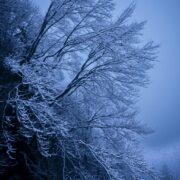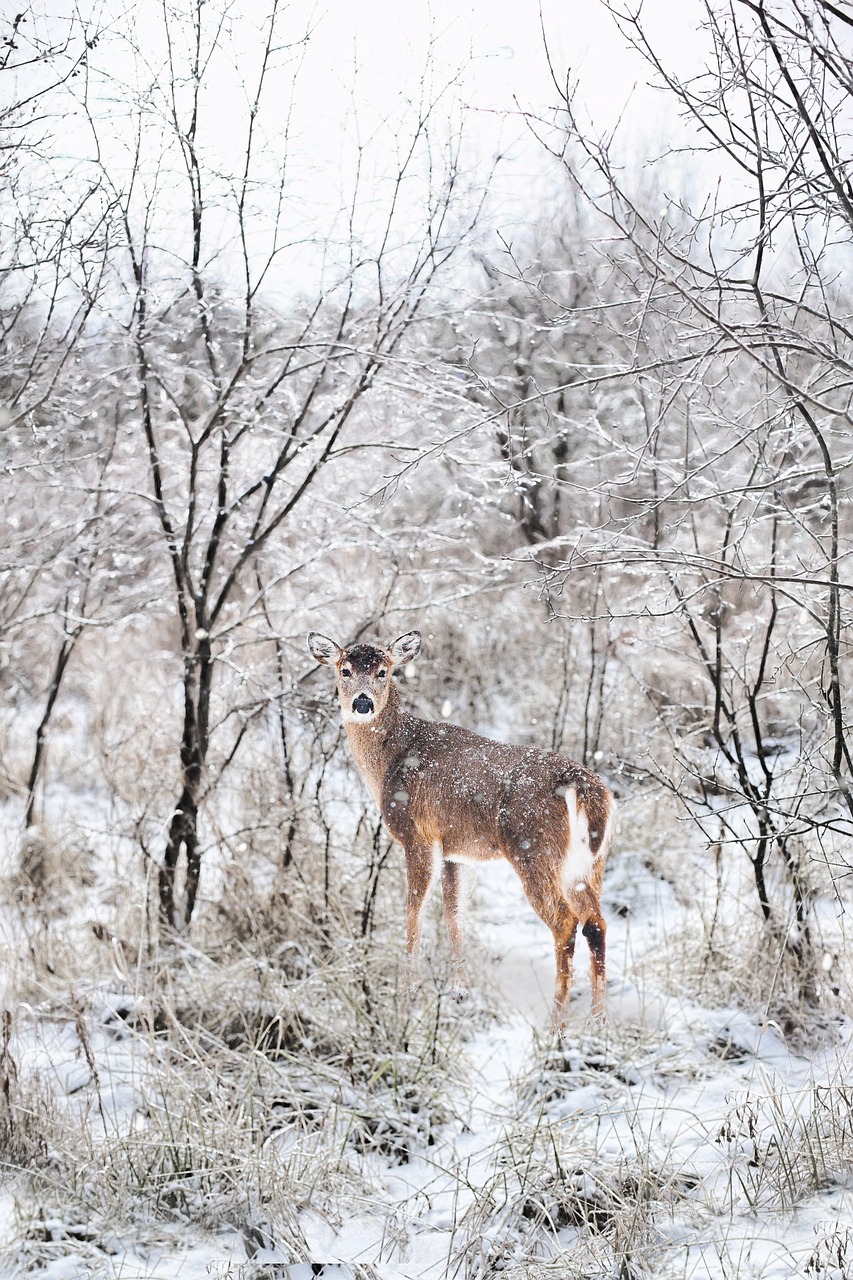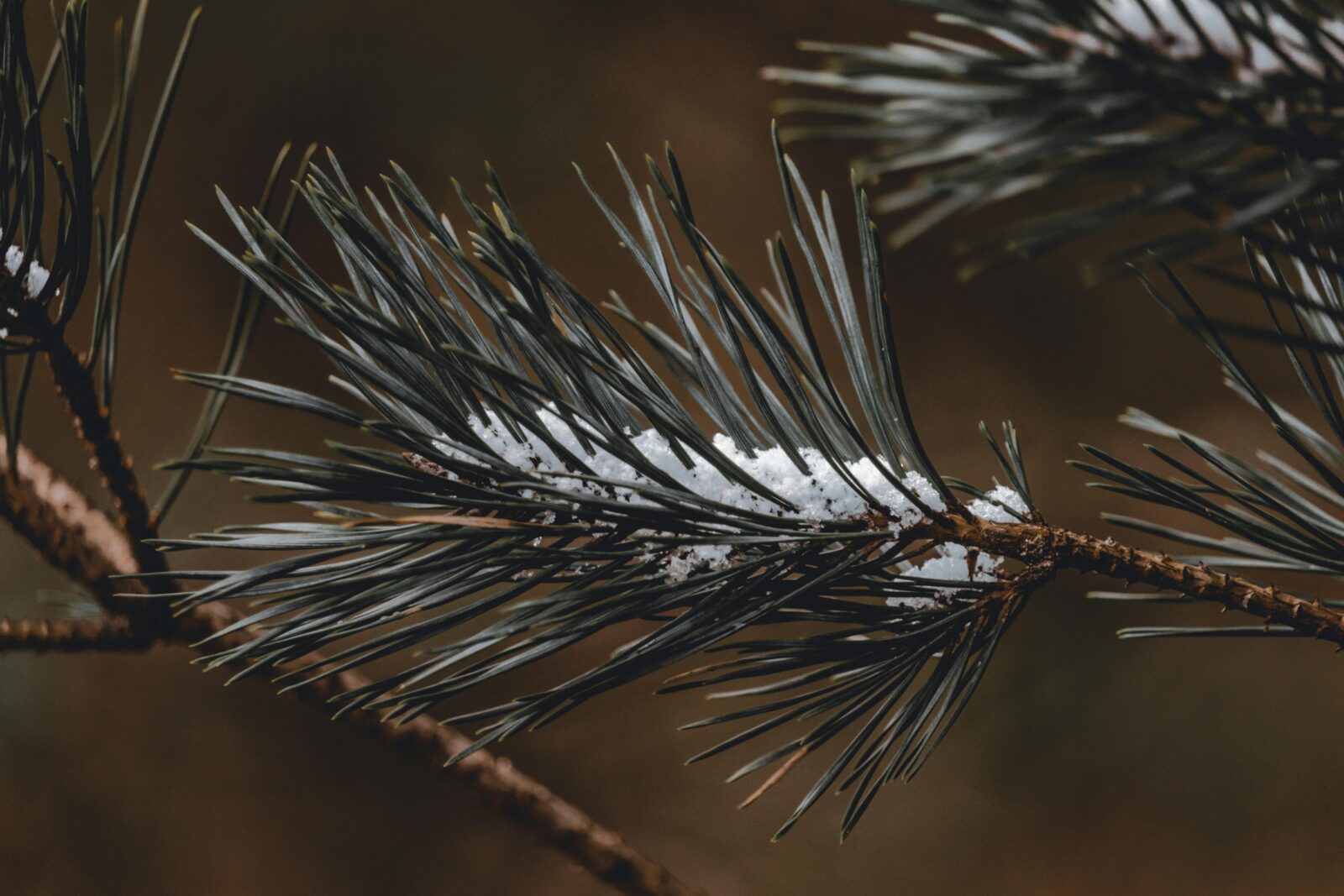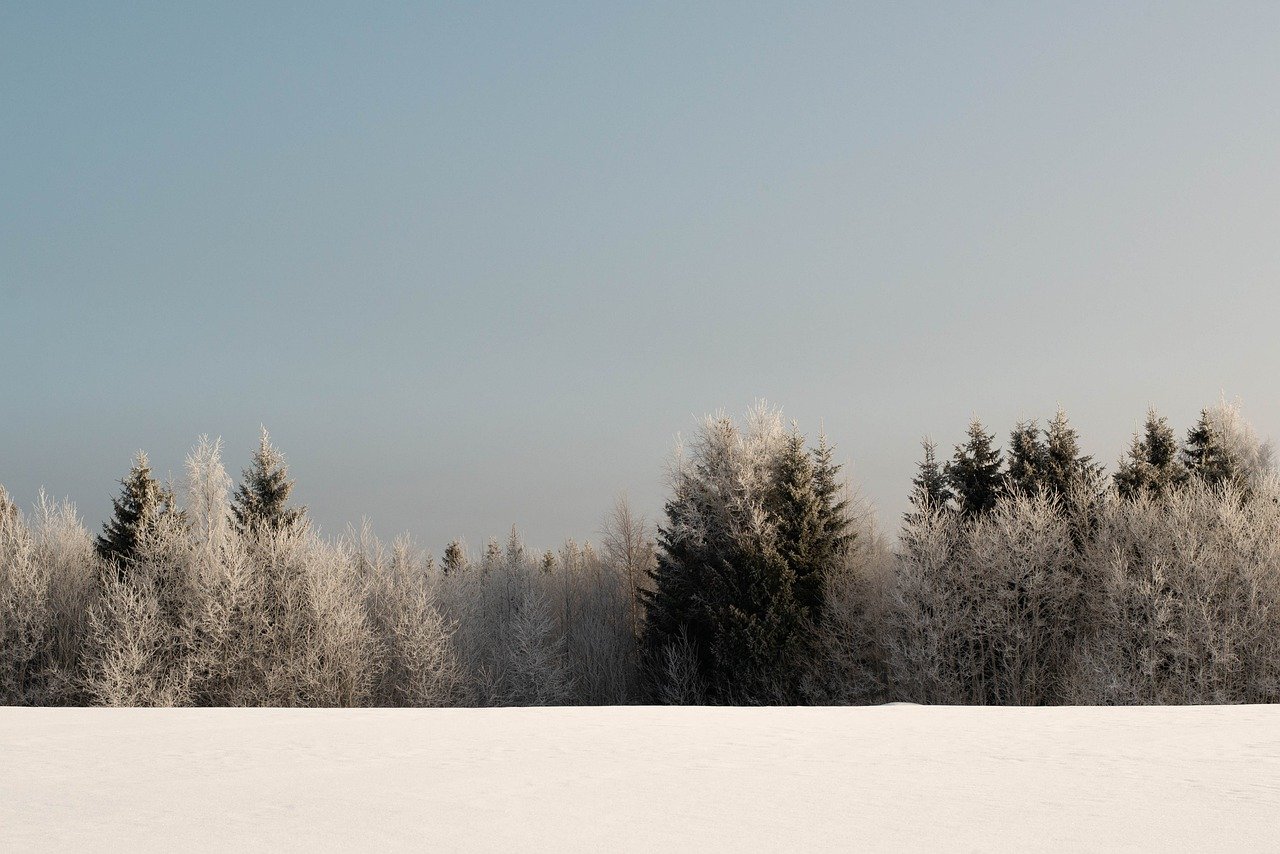UNDRESS FOR WINTER, THE CHOICE OF SOME TREES
Days are getting shorter and weather colder. To get through the winter, trees have two main ways of adapting: either dressed or bare. Some trees will lose their leaves before winter, while others will keep them. How can trees survive these two very different adaptations to winter ?
Bare trees
Trees that lose their leaves once a year, as winter approaches, are called “deciduous”. In Quebec, deciduous trees include all hardwoods, such as maples, and one species of conifer (larch). These trees start to lose their leaves in autumn, and next spring, new ones grow back.
Luckily for the tree about to shed its leaves, not all the content is lost. Before its fall, the leaf transmits some of its essential elements, such as potassium to the tree, a process known as translocation. So, even without its leaves, the tree has a reserve for winter.
Why do they fall? There are several reasons. Firstly, leaves occupy a large surface area, so snow can easily settle on them. As snow and ice accumulate, the extra weight can break branches. Also, the circular shape of many deciduous trees encourages snow stagnation. [1]
Secondly, in winter, there’s less water available because most of it freezes. So it’s essential to conserve the water already accumulated before. Leaves have many small openings, called stomata, which serve, among other things, to release water molecules during cellular respiration. If deciduous trees were to keep their leaves over winter, water would necessarily be lost through these openings.
Clothed trees
Trees that keep their leaves through the winter are called “sempervirent”. In Quebec, these are conifers like the fir. Instead of large leaves, these trees have small, modified leaves, commonly called needles.
Needles have fewer openings to let water out. Moreover, the openings are not on the surface, but in the hollow of the needle. This forms a humid dome where less water is lost. [2] Another element that reduces water loss from needles is the waxy layer that covers each needle like an impermeable.
Conifers also have a shape that limits the settlement of snow and ice. The triangular shape acts like the roof of our houses: it makes the snow slide downwards. Also, the small surface area of the needles provides poor support for flakes in search of a foothold. [2]
Energy distribution
Deciduous trees shed their leaves every year to protect themselves from water loss, among other things. However, this annual leaf loss also means that a huge quantity of new leaves must be produced each spring. These trees therefore spend an enormous amount of energy to regain their leaves quickly.
Sempervirent trees, on the other hand, use their energy gradually to produce more tenacious leaves that will last over time. [3]
Only one species doesn’t follow the group. As mentioned earlier, deciduous trees lose their leaves in winter, while conifers keep them, except for the larch! This conifer is the only one in Quebec to lose its leaves in winter. It has combined both strategies. It has small, wax-covered needles, but loses them in winter. This adaptation enables it to live in extreme environments, such as high in the mountains of Canada and Siberia. It can also tolerate temperatures of -50°C and live to be 800 years old! [4]
Trees are magnificent, often large, living creatures. Understanding their way of life helps us to recognize the resilience they possess in the face of climate change and the biodiversity crisis. For example, with the increase in CO2 in California’s air, plants have adapted over the last 150 years by reducing their number of stomata and altering the size of the stomata opening [5]. Think about it the next time you’re out in the snow!
[1] Parlons science. (n.d.) Comment les arbres survivent-ils à l’hiver ? [Online]. https://parlonssciences.ca/ressources-pedagogiques/les-stim-expliquees/comment-les-arbres-survivent-ils-a-lhiver#:~:text=Alors%2C%20comment%20r%C3%A9sistent%2Dils%20au,entra%C3%AEnant%20une%20perte%20d%27eau
[2] Association forestière du sud du Québec. (n.d.) L’arbre, d’hier à aujourd’hui. [Online]. https://www.afsq.org/fr/trouver-de-linformation-1/copie—l-arbre-d-hier-a-aujourd-hui
[3] Bouchard, É. (2020). Perdre ou ne pas perdre ses feuilles. [En ligne]. https://paqlab.uqam.ca/articles/news_2020-10-29.pdf
[4] Riou-Nivet, P. (2001). Le melèze. [Online book]. https://books.google.ca/books?hl=fr&lr=&id=lWo9reWvG2wC&oi=fnd&pg=PA8&dq=meleze&ots=s7lYiZAZ_1&sig=7xxboZDwibxBmrpNOkdvM-HR41U&redir_esc=y#v=onepage&q=meleze&f=false
[5] Lammersta, E. (2011). Global CO2 rise leads to reduced maximum stomatal conductance in Florida vegetation. [Online]. https://www.pnas.org/doi/10.1073/pnas.1100371108






